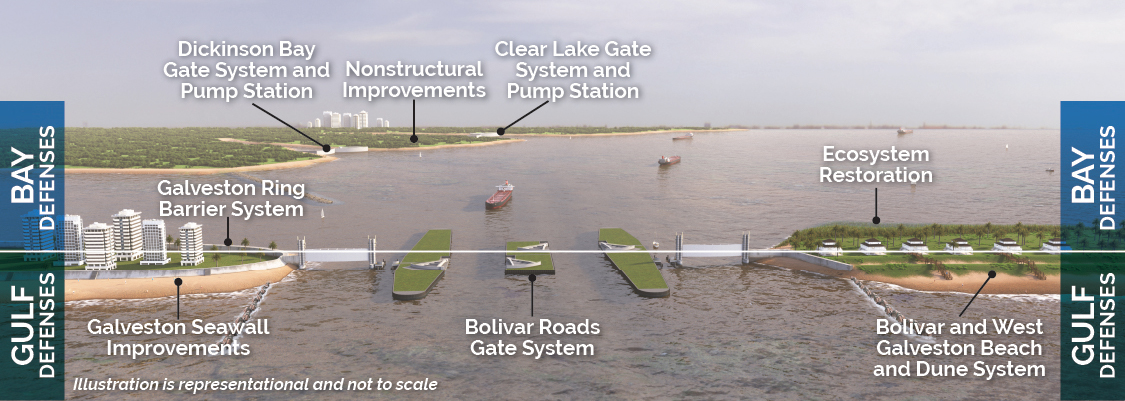TMC names UK cohort, lawsuit against Houston fintech co. gets dismissed, and more trending innovation news
top stories
Editor's note: Let's roundup the most-read Houston innovation news from the week. Trending Houston tech and startup articles from InnovationMap and its daily newsletter included a new cohort for a TMC accelerator, a win for a Houston fintech company, a NASA-backed space program at UH, and more.
16 digital health, medical device companies selected for UK, TMC accelerator

The Texas Medical Center has named its second cohort for its United Kingdom-focused health tech accelerator. Photo via TMC
For the second time, an accelerator backed by the United Kingdom and hosted by Texas Medical Center Innovation has named 16 companies to its new cohort.
In partnership with Innovate UK, TMC named the new cohort companies in an announcement this week. The companies are divided into two categories — digital health and medical device — and cover a wide range of specialties, from diagnostics and AI monitoring to non-surgical management and more.
The accelerator launched last year with its inaugural cohort with the mission of helping companies make their United States expansion by way of the TMC. Continue reading.
Houston college lands $5M NASA grant to launch new aerospace research center

The five-year grant from NASA will go toward creating the NASA MIRO Inflatable Deployable Environments and Adaptive Space Systems Center at UH. Photo via UH.edu
The University of Houston was one of seven minority-serving institutions to receive a nearly $5 million grant this month to support aerospace research focused on extending human presence on the moon and Mars.
The $4,996,136 grant over five years is funded by the NASA Office of STEM Engagement Minority University Research and Education Project (MUREP) Institutional Research Opportunity (MIRO) program. It will go toward creating the NASA MIRO Inflatable Deployable Environments and Adaptive Space Systems (IDEAS2) Center at UH, according to a statement from the university.
“The vision of the IDEAS2 Center is to become a premier national innovation hub that propels NASA-centric, state-of-the-art research and promotes 21st-century aerospace education,” Karolos Grigoriadis, Moores Professor of Mechanical Engineering and director of aerospace engineering at UH, said in a statement. Continue reading.
Judge dismisses case from former Trump officials suing Houston fintech platform

It's a win for Hello Alice. Photo courtesy Cayce Clifford/Hello Alice
A Houston fintech company is celebrating the dismissal of a lawsuit from former Trump Administration officials.
Last year, America First Legal sued Houston-based Hello Alice and its partner, Progressive Insurance, alleging that their program to award 10 $25,000 grants to Black-owned small businesses constitutes racial discrimination. AFL was founded by former Trump Administration adviser Stephen Miller and features a handful of other former White House officials on its board.
The case has been dismissed by a federal judge in Ohio, who said that the “Plaintiffs fail to allege any injury in fact that would support their standing to seek either retrospective or prospective relief," according to a news release from Hello Alice. Continue reading.
Houston investors back new platform for retail traders looking to follow financial influencers

CashPool is a new mobile platform that gives everyday investors the opportunity to derive influence from the investment strategies and trades made by trusted and influential stock traders. Photo via joinmypool.co
As anyone who witnessed the impact Gamestop's meme stock had on the country already realizes, influential investors can drive momentum within the financial sector. And one company with fresh funding from a Houston firm is betting on that exactly.
CashPool is a new mobile platform that gives everyday investors the opportunity to derive influence from the investment strategies and trades made by trusted and influential stock traders who have built substantial followings on social media platforms. By allowing retail traders the chance to join social media influencers’ various “pools” on its platform, CashPool is primed to change the way the masses acquire wealth.
This is the kind of algorithmic trading aimed at a new generation of investors that gets the attention of early-stage venture capital funds like Houston-based Ten X Labs, a pre-seed angel fund that recently invested in CashPool to help the trading platform continue its mission of transforming the investment landscape. Continue reading.
Innovative coastline project on Bolivar Peninsula receives federal funding

Known as Ike Dike, the proposed project received federal funding from U.S. Army Corps of Engineers. Photo courtesy
The Galveston’s Coastal Barrier Project recently received federal funding to the tune of $500,000 to support construction on its flood mitigation plans for the area previously devastated by Hurricane Ike in 2008.
Known as Ike Dike, the proposed project includes implementing the Galveston Bay Storm Surge Barrier System, including eight Gulf and Bay defense projects. The Bolivar Roads Gate System, a two-mile-long closure structure situated between Galveston Island and Bolivar Peninsula, is included in the plans and would protect against storm surge volumes entering the bay.
The funding support comes from U.S. Army Corps of Engineers (USACE) and will go toward the preconstruction engineering and design phase of Ecosystem Restoration feature G-28, the first segment of the Bolivar Peninsula and West Bay Gulf Intracoastal Waterway Shoreline and Island Protection. Continue reading.






